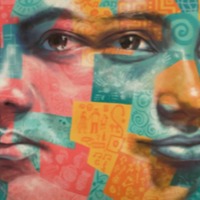
Marlene
There are an estimated 403,000 people living in modern slavery in the United States (GSI 2018). Sex trafficking exists throughout the country. Traffickers use violence, threats, lies, debt bondage and other forms of coercion to compel adults and children to engage in commercial sex acts against their will. The situations that sex trafficking victims face vary, many victims become romantically involved with someone who then forces them into prostitution. Others are lured with false promises of a job, and some are forced to sell sex by members of their own families. Victims of sex trafficking include both foreign nationals and US citizens, with women making up the majority of those trafficked for the purposes of commercial sexual exploitation. In 2015, the most reported venues/industries for sex trafficking included commercial-front brothels, hotel/motel-based trafficking, online advertisements with unknown locations, residential brothels, and street-based sex trafficking. Marlene was 15 years old when she was forced in to prostitution by a couple that lived in her neighbourhood. She was taken around the country forced to provide sexual services for eight months. Carson now works to provide services and support to other young girls have been trafficked in to prostitution.
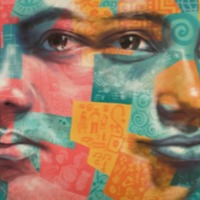
Leah Albright-Byrd
There are an estimated 403,000 people living in modern slavery in the United States (GSI 2018). Sex trafficking exists throughout the country. Traffickers use violence, threats, lies, debt bondage and other forms of coercion to compel adults and children to engage in commercial sex acts against their will. The situations that sex trafficking victims face vary, many victims become romantically involved with someone who then forces them into prostitution. Others are lured with false promises of a job, and some are forced to sell sex by members of their own families. Victims of sex trafficking include both foreign nationals and US citizens, with women making up the majority of those trafficked for the purposes of commercial sexual exploitation. In 2015, the most reported venues/industries for sex trafficking included commercial-front brothels, hotel/motel-based trafficking, online advertisements with unknown locations, residential brothels, and street-based sex trafficking. Leah ran away from home when she was 14 years old. She went to live her drug dealer in Sacremento who soon forced her to ‘contribute to the household’ by providing sexual services. Leah was in the life for four years before she was able to escape. She speaks of the role faith has had in enabling her to work through her trauma.
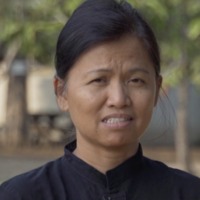
Esther Caukill
It is estimated that an estimated 37,000 people are living in modern slavery in Japan (GSI 2018). The country is the destination for men, women and children trafficked for forced labour and commercial sexual exploitation. The majority of trafficking victims are foreign women who migrate willingly seeking work, but find themselves trapped in debt bondage, having to work in domestic and sex work to pay off fees incurred. Despite warning from the U.N., it is reported that human trafficking is on the rise in Japan. International Children’s Care Advocate Esther Caukill shares her story of finding peace after being trafficked for sexual exploitation to Japan when she was 19.
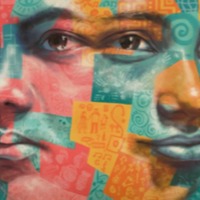
Efe
There are an estimated 1,045,000 people living in conditions of modern slavery in the Democratic Republic of Congo (GSI 2018). In 2016 several armed groups continued to abduct and forcibly recruit men, women and children as combatants and in support roles such as guards, cleaners, cooks and spies. In 2016, 184 cases of child soldiers were reported, with 1,662 children reported to have separated or escaped from armed groups. Child soldiers who manage to escape remain vulnerable to re-recruitment as adequate rehabilitation services remain unavailable to children suffering trauma, stigmatisation and the continued threat of armed groups. Efe was abducted by armed forces in the Democratic Republic of Congo and taken to a camp where she was locked up with four other women.
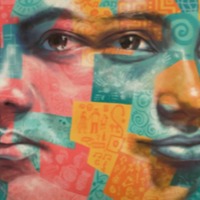
Anita D
The Global Slavery Index 2018 estimates that on any given day there were nearly 8 million people living in modern slavery in India. The GSI 2018 reports an emerging trend in northeast India where organised trafficking syndicates operate along the open and unmanned international borders, duping or coercing young girls seeking employment outside their local area in to forced sexual exploitation. Many women and girls are lured with the promise of a good job but then forced in to sex work, with a 'conditioning' period involving violence, threats, debt bondage and rape. Anita D was 19 years old when she took a job as a maid in India. However, upon arrival she discovered she would be forced to work in a brothel. Anita was locked in a room for three years and forced to provide sexual services for up to 40 men a day. Anita tells of the importance of status to survival in the brothel, how she became a madam, and how finding religion showed her the path to freedom.
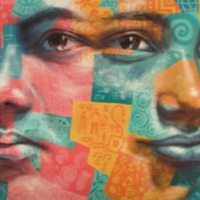
Mo
There are an estimated 136,000 people living on conditions of modern slavery un the United Kingdom (Global Slavery Index 2018). According to the 2017 annual figures provided by the National Crime Agency, 5, 145 potential victims of modern slavery were referred through the National Referral Mechanism in 2017, of whom 2,454 were female, 2688 were male and 3 were transgender, with 41% of all referrals being children at the time of exploitation. People are subjected to slavery in the UK in the form of domestic servitude, labour exploitation, organ harvesting and sexual exploitation, with the largest number of potential victims originating from Albania, China, Vietnam and Nigeria. This data however does not consider the unknown numbers of victims that are not reported. Mo was living in Myanmar (Burma) when he was forced to leave after the persecution of Muslim people. He was staying in a refugee camp with his family which he describes as a ‘prison’. After running away he travelled by lorry to the UK. He was put in to a house and forced to work in a restaurant for little pay and no days off. Mo is now in a safe house, waiting for his passport and papers to be able to work.
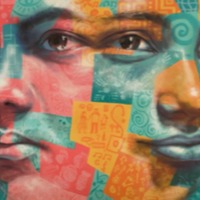
Agol Chan Gop
There are an estimated 465,000 people living in modern slavery in Sudan (GSI 2018). Between 1983 and 2005, the central government of Sudan enslaved tens of thousands of black South Sudanese Christian and traditionalist people. It was part of a genocidal war against South Sudan, with a simple aim: to force South Sudan to become Arab and Muslim. Agol Chan Gop was kidnapped as a young girl and forced to be the wife of a man named Ibrahim. Agol was forced to do all the housework and was raped repeatedly, having two children by Ibrahim. Agol was also subjected to forced female circumcision and had her children taken away from her.
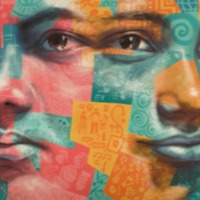
Abuk Garang Thiep
There are an estimated 465,000 people living in modern slavery in Sudan (GSI 2018). Between 1983 and 2005, the central government of Sudan enslaved tens of thousands of black South Sudanese Christian and traditionalist people. It was part of a genocidal war against South Sudan, with a simple aim: to force South Sudan to become Arab and Muslim. Abuk Garang Thiep was taken from South Sudan in 1997 and forced to work for her master, cooking and washing his clothes. Abuk was also subjected to forced female circumcision and forced her to marry an Arab man. Abuk was rescued by a slave retriever but forced to leave her children behind.
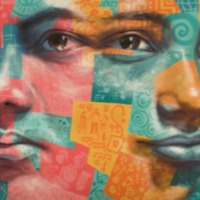
Aguil Mawien Tang
There are an estimated 465,000 people living in modern slavery in Sudan (GSI 2018). Between 1983 and 2005, the central government of Sudan enslaved tens of thousands of black South Sudanese Christian and traditionalist people. It was part of a genocidal war against South Sudan, with a simple aim: to force South Sudan to become Arab and Muslim. Aguil Mawien Tang was abducted from Marial Bai in South Sudan in 1996. On the way North Aguil recounts how people were beaten and killed on the journey and how slave raiders raped the women. Aguil was raped and beaten by two groups of men. Upon arrival in the North, Aguil was forced to work for one of the raiders that had raped her. Aguil was finally able to leave with the help of a slave retriever.

Agany Ateny Angony
There are an estimated 465,000 people living in modern slavery in Sudan (GSI 2018). Between 1983 and 2005, the central government of Sudan enslaved tens of thousands of black South Sudanese Christian and traditionalist people. It was part of a genocidal war against South Sudan, with a simple aim: to force South Sudan to become Arab and Muslim. Agany Ateny Angony was abducted from South Sudan in 1986. Upon arrival in the North Agany was told that if he wanted to be free he must become a Muslim. After his conversion the beatings stopped but he was still unable to leave and forced to work. Agany eventually escaped to join his two wives in an IDP camp, however life there was no better. He finally returned to South Sudan with the help of a slave retriever.
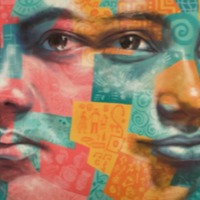
Ayak Piol Mabior
There are an estimated 465,000 people living in modern slavery in Sudan (GSI 2018). Between 1983 and 2005, the central government of Sudan enslaved tens of thousands of black South Sudanese Christian and traditionalist people. It was part of a genocidal war against South Sudan, with a simple aim: to force South Sudan to become Arab and Muslim. Ayak Piol Mabior was abducted from South Sudan with her mother and siblings and taken to the North. Her two brother died on the journey and Ayak was separated from the rest of her family upon arrival. Ayak was subjected to physical abuse and sexual violence on a regular basis. Ayak met a free worker named Rau and secretly became his wife, running away to Rau’s house when she became pregnant.
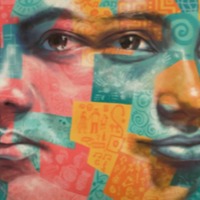
Nyang Deng Jiel
There are an estimated 465,000 people living in modern slavery in Sudan (GSI 2018). Between 1983 and 2005, the central government of Sudan enslaved tens of thousands of black South Sudanese Christian and traditionalist people. It was part of a genocidal war against South Sudan, with a simple aim: to force South Sudan to become Arab and Muslim. Nyang Deng Jiel was taken as a young child to the North and forced to look after his kidnapper’s cattle. Nyang was subjected to regular beatings and had his food withheld. Nyang was finally rescued by a slave retriever.
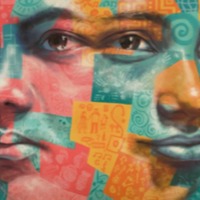
Amel Dor Manyuol
There are an estimated 465,000 people living in modern slavery in Sudan (GSI 2018). Between 1983 and 2005, the central government of Sudan enslaved tens of thousands of black South Sudanese Christian and traditionalist people. It was part of a genocidal war against South Sudan, with a simple aim: to force South Sudan to become Arab and Muslim. Amel Dor Manyuol was taken by the murahileen in 2000. Amel was forced to work in the home of one of her kidnappers in the North and was subjected to beatings on a regular basis. Amel was also raped and subjected to forced female genital mutilation.
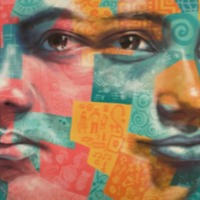
Abuk Alieu Yom
There are an estimated 465,000 people living in modern slavery in Sudan (GSI 2018). Between 1983 and 2005, the central government of Sudan enslaved tens of thousands of black South Sudanese Christian and traditionalist people. It was part of a genocidal war against South Sudan, with a simple aim: to force South Sudan to become Arab and Muslim. Abuk Alieu Yom was abducted by slave raiders as a child. When she arriaved in North she was sold to a man named Abdullah who forced her to work in the house and subjected her to beatings. She was renamed and forced to pray like a Muslim. Abuk was forced to undergo female circumcision and marry. She was eventually able to escape with the help of a slave retriever.
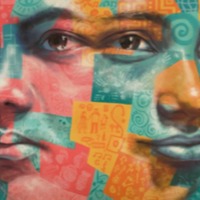
Abuk Ucoak Bol
There are an estimated 465,000 people living in modern slavery in Sudan (GSI 2018). Between 1983 and 2005, the central government of Sudan enslaved tens of thousands of black South Sudanese Christian and traditionalist people. It was part of a genocidal war against South Sudan, with a simple aim: to force South Sudan to become Arab and Muslim. Abuk Ucoak Bol was kidnapped in 1986 by the murahileen during a time of famine. Her parents and one of her children were killed when trying to prevent them being separated. Abuk was subjected to rape, beatings and forced to wash and clean for the man who killed her parents.
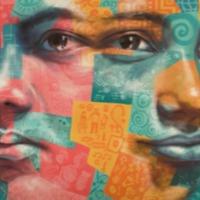
Akeen Gon Bol and Achol Deng
There are an estimated 465,000 people living in modern slavery in Sudan (GSI 2018). Between 1983 and 2005, the central government of Sudan enslaved tens of thousands of black South Sudanese Christian and traditionalist people. It was part of a genocidal war against South Sudan, with a simple aim: to force South Sudan to become Arab and Muslim. Akeen was just a toddler when he was abducted by the murahileen and taken to Matek.
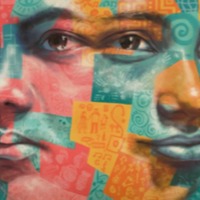
Rajirishi
The Global Slavery Index 2018 estimates that on any given day there were nearly 8 million people living in modern slavery in India. While the bonded labour system is formally abolished and criminalised, recent research indicated that bonded labour is still prevalent in India. A 2016 report found that in the state of Tamil Nadu, 351 of 743 spinning mills used bonded labour schemes, otherwise known as Sumangali schemes. Similarly in granite quarries, wage advances and loans with an interest ranging from 24% to 36% are used to bond workers. Situations of debt bondage are often aggravated by the need to raise emergency funds or take on loans for health crises. Rajirishi inherited his father’s debt after he passed away and though he was able to pay it off after 5 years, he has now accumulated around 60,000 rupees of his own debt, forcing him to work as a bonded labourer. Rajirishi tells of how daily wagework does not provide enough to support his family, and of the relationship between him and his landlord.
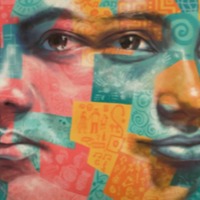
Obaid
The Global Slavery Index 2018 estimates that on any given day there were nearly 8 million people living in modern slavery in India. While the bonded labour system is formally abolished and criminalised, recent research indicated that bonded labour is still prevalent in India. A 2016 report found that in the state of Tamil Nadu, 351 of 743 spinning mills used bonded labour schemes, otherwise known as Sumangali schemes. Similarly in granite quarries, wage advances and loans with an interest ranging from 24% to 36% are used to bond workers. Situations of debt bondage are often aggravated by the need to raise emergency funds or take on loans for health crises. Obaid has been in bonded labour for 25 years and discusses his relationship with his landlord. Obaid talks about being trapped in bonded labour, having to borrow money off other landlords to pay off the ones demanding their money back. He also speaks of his fear of his sons being unable to pay off their debt and his reservations about government schemes.
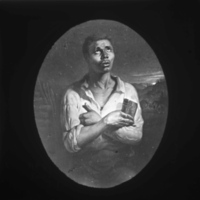
Praying Man
Unknown. This photograph formed part of the Harris Lantern Slide Collection. Under King Leopold II the Congo Free State used mass forced labour to extract rubber from the jungle for the European market. As consumer demand grew King Leopold II's private army - the Force Publique - used violent means to coerce the population into meeting quotas, including murder, mutilation, rape, village burning, starvation and hostage taking. Alice Seeley Harris and her husband Reverend John H. Harris were missionaries in the Congo Free State from the late 1890s. Alice produced a collection of images documenting the horrific abuses of the African rubber labourers. Her photographs are considered to be an important development in the history of humanitarian campaigning. The images were used in a number of publications. The Harrises also used the photographs to develop the Congo Atrocity Lantern Lecture which toured Britain and the the USA raising awareness of the issue of colonial abuses under King Leopold II's regime.Source: Antislavery International.
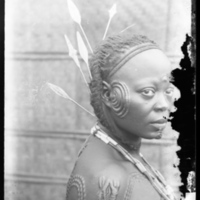
Young African Woman
Two descriptions exist for this image. The first is taken from the original photograph held at the Bodleian Library in Oxford. It reads 'An Ikelemba woman with tribal mark.' The second is taken from Antislavery International website's and reads 'Ngombe woman from the Bangalla region of the Upper Congo. The face cicatrisation is called 'the rasp'. Cicatrisation was a common practice in this region. See John H. Harris, Dawn in Darkest Africa (London: Smith, Elder & Co, 1912).' This photograph formed part of the Harris Lantern Slide Collection and was used in the Harris Lecture No.2. This image formed part of the Harris Lantern Slide Collection. Under King Leopold II the Congo Free State used mass forced labour to extract rubber from the jungle for the European market. As consumer demand grew King Leopold II's private army - the Force Publique - used violent means to coerce the population into meeting quotas, including murder, mutilation, rape, village burning, starvation and hostage taking. Alice Seeley Harris and her husband Reverend John H. Harris were missionaries in the Congo Free State from the late 1890s. Alice produced a collection of images documenting the horrific abuses of the African rubber labourers. Her photographs are considered to be an important development in the history of humanitarian campaigning. The images were used in a number of publications. The Harrises also used the photographs to develop the Congo Atrocity Lantern Lecture which toured Britain and the the USA raising awareness of the issue of colonial abuses under King Leopold II's regime. Source: Antislavery International.